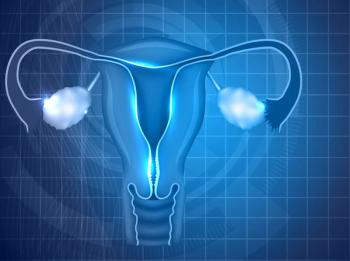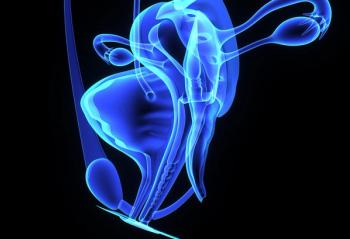
Oncology NEWS International
- Oncology NEWS International Vol 13 No 8
- Volume 13
- Issue 8
Role of Selective Dose Escalation and Addition of Cytoprotection Evaluated in Patients With Esophageal Cancer
The 14 reports in this special supplement discuss theuse of the cytoprotectant amifostine in patients withcancer of the head and neck, esophagus, lung, andcervix, as well as those with lymphoma and acutemyelogenous leukemia. Discussions focus on thepotential of this agent to both reduce radiation sideeffects such as xerostomia and permit doseescalation of chemotherapy and/or radiotherapy.Improvements in treatment outcome and quality oflife as a result of cytoprotection are examined.
PORTLAND, OR-A treatment-intensification study inesophageal cancer patients thatincludes an additional boost of radiotherapyin combination withfluorouracil (5-FU), carboplatin(Paraplatin) and paclitaxel (Taxol),and amifostine (Ethyol) hasmet with early difficulties, and accrualhas been stopped pendinglonger follow-up, reports StevenK. Seung, MD, PhD, a radiationoncologist at the Oregon Clinic, inPortland. The addition of amifostineis an attempt to build on promisingresults of an earlier selectivedose-escalation study in patientswith esophageal cancer by usingcytoprotection to reduce treatment-related morbidity and mortality.Dr. Seung first discussed theearlier INT-0123 study, which increasedthe radiation dose to 64.8Gy vs the standard 50.4 Gy. In thistrial, 31% of patients survived 2years, but less than 50% of patientshadlocal control, and mortality inthe high-dose arm was greaterowing to complications.
"High-dose chemoradiotherapymay be too toxic, perhaps becauseprolonging the chemothera-py may have been too arduous forthese patients," Dr. Seung said."We decided first to try a fast-andhardapproach by giving a shortercourse of intensified chemoradia-tion and then selectively escalatingthe dose for patients who do nothave a good clinical response tostandard-dose radiotherapy."Radiation Dose Escalation
The prospective study designassessed survival and failure patternsof patients treated with conventional50.4 Gy radiotherapy andcarboplatin/5-FU/paclitaxel, thenselectively escalated the radiationdose in patients who had less thana complete response (CR) or partialresponse (PR) to initial treatment,with a PR defined as a 50%reduction in maximal dimensionof tumor and negative biopsy.The researchers enrolled 18 patientswith T1-4, N0-1, M0-1aesophageal cancer. "Most wereadenocarcinomas, reflecting thechange in the natural history ofthis disease," Dr. Seung said.Approximately 6 to 8 weeks afterinitial chemoradiotherapy, patientsunderwent repeat stagingwith computed tomography (CT)scan, esophageal ultrasound, andbiopsy. Those with less than aPR received a boost dose of900 cGy with concurrent paclitaxel/carboplatin/continuous infusion5-FU. Patients were followedevery 4 months with CT and endoscopyfor the first year and every 6months thereafter.With a median follow-up of 19months, 11 of 18 patients had attainedCR or PR, Dr. Seung reported.Six of 18 received a boost.One patient died of heart failureprior to completing the initialcourse. Overall survival was 30%at 3 years, with a median survivalduration of 25 months, despite39% of the patients having stageIVA disease."Patients with weight loss greaterthan 10% had lower survival inthis study and in other trials," Dr.Seung said (see Figure 1).One factor in weight loss wasacute esophagitis. One patient hadgrade 4 esophagitis, 7 patients hadgrade 3 esophagitis (none requiredfeeding tubes), and 16 had grade 2esophagitis.Amifostine Added
"This protocol allows screeningof patients at risk for local failure,allowing selection of high-risk patientsto undergo dose-escalation.Reducing the acute side effects mayfurther improve compliance andoutcome, which raised the questionof a role for amifostine," Dr. Seungsaid.The investigators then decided toadd amifostine 500 mg SC prior toeach dose of radiotherapy, which wasgiven at 1.8 Gy 5 days per week for5.5 weeks (50.4 Gy in 28 fractions).The first four patients treated withthis approach all had to stop receivingamifostine prior to completionof treatment. Two had generalizedrash, one had nausea and hypotension,and one had arrhythmia.Tumor recurred within 4 months inone of these four patients but hasnot recurred at 2, 6, and 7 monthsof follow-up in the other three patients.
Articles in this issue
over 21 years ago
Benefits of SLN Biopsy Upheld in Large Trialover 21 years ago
Gemcitabine/Taxol: Another New Standard in Metastatic Caover 21 years ago
Statins Cut Colon Ca Risk in Half in Retrospective Studyover 21 years ago
Breast Cancer Regimen Is Dose Dense, Dose IntenseNewsletter
Stay up to date on recent advances in the multidisciplinary approach to cancer.































































































